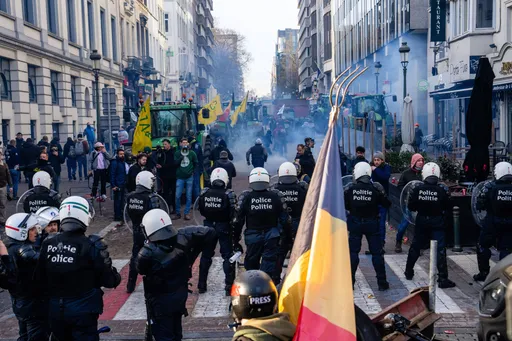French authorities have formally identified 26 out of 27 people who died in a dinghy incident on the English Channel last month, the largest such incident in years in the short stretch of sea between France and Britain.
Here is what you need to know about them.
Who were the 26 refugees?
Most of the people who died in the tragedy were Kurds from Iraq.
A statement from the Paris prosecutor said that there were 17 men among the deceased aged 19-26, seven women aged 22-46, as well as a 16-year-old teenager and a child aged seven.
Sixteen of the victims were Kurds from Iraq, four were Afghan men. There were also three Ethiopians, a Somali woman, an Iranian and an Egyptian man.
Why did it take so long to identify them?
Authorities often have difficulties identifying migrants and refugees who died on the road. They often do not carry official documents, and their family members frequently have to travel from remote areas overseas to see the bodies.
When news of the disaster broke, only those families who could travel to the coroner’s office in Lille, northern France, to see if their loved ones were among the victims could identify the bodies. Others relied on organisations in France and the UK who were helping with the identification and liaising with the families.
Why were most of them Kurds from Iraq?
Many people from the semi-autonomous Kurdish-dominated region of Iraq have been seen taking dangerous journeys on the English Channel as well as to Belarus in the last few months. Thousands of Iraqi Kurds were repatriated from Belarus, which has been in a standoff with the European Union over asylum seekers gathered at the Poland-Belarus border.
They decry a lack of opportunities at home and economic hardship in the region.
Didn’t we promise safe routes to Afghans?
After the withdrawal of US and NATO forces from Afghanistan, and the return of the Taliban to power, tens of thousands of Afghans were evacuated from the country alongside foreign nationals.
But after the first few weeks evacuation efforts stalled, and resettlement programmes have barely begun, if at all. They will cover a small part of the Afghans at risk who have fled elsewhere in the region, mostly in Pakistan and Iran, or are still stranded inside the country – making dangerous journeys the only viable option for many.
Is there any more clarity about what happened?
French investigators are still trying to establish a clearer picture of what happened during the disaster.
They are investigating reports the passengers had telephoned both French and British emergency services, appealing for help when the vessel began sinking, as one survivor told the Kurdish Iraqi channel Rudaw.
The number of sea crossings from France to the United Kingdom has risen sharply in the last year, from just over 8,000 in 2020 to more than 23,000 so far this year.
The incident also caused major diplomatic tensions between London and Paris.
























